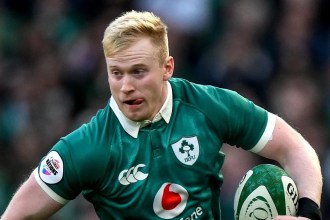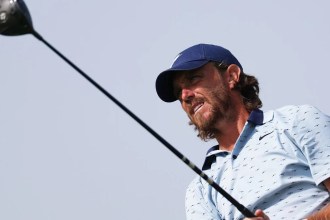Officiating in the NHL has long been a contentious issue, often described as one of the toughest jobs in sports. With the game accelerating in complexity and speed, referees face unprecedented pressure to make split-second decisions, all while being scrutinized by fans, players, and coaches alike. The conversation surrounding potential reforms in officiating is more relevant than ever. The latest radical ideas to improve NHL officiating suggest a multifaceted approach to addressing these persistent issues, focusing on both technological integration and the fundamental structure of officiating.
The Current Landscape of NHL Officiating
Officiating hockey at the NHL level requires an intricate understanding of the game, along with the ability to remain impartial amidst a barrage of emotional reactions from 19,000 fans. The sport has evolved, with larger, faster players making the game a high-speed chess match, where the stakes are perpetually high. In this high-pressure environment, the accuracy and consistency of calls can significantly impact the outcome of games.
The NHL has often been criticized for its officiating inconsistencies, particularly with the advent of video replays, which can sometimes complicate rather than clarify decisions. Fans frequently express dissatisfaction with the officiating, and this has sparked numerous discussions on how to enhance the quality of a referee’s performance and, by extension, the integrity of the game itself.
Historical Context and Innovation
This issue isn’t new. Back in the 1940s, former NHL player Herbie Lewis proposed an innovative solution for officiating problems. His idea involved placing referees in a high perch, equipped with lights to signal penalties and stoppages in play, aiming to minimize confrontations with players. While this concept was inventive, practical challenges, particularly concerning player safety and the nature of brawls, rendered it largely theoretical.
More recently, Adam Proteau, a columnist for The Hockey News, advocated for a contemporary update to officiating mechanics: removing one referee from the ice and assigning the role of an "eye-in-the-sky." This official would oversee the game from an elevated vantage point and intervene in plays where the on-ice officials might miss crucial infractions. This idea aims to reduce the number of replays while providing a comprehensive look at the game’s fast-paced nature.
A Double-Edged Sword: Technology’s Role
Technology’s role in officiating has been double-edged; while it has the potential to enhance accuracy, it can also disrupt the flow of the game. Striking a balance between human judgment and technological assistance is essential. Proteau’s "eye-in-the-sky" concept suggests a practical integration of technology that could improve decision-making while simultaneously minimizing the constant breaks for video reviews, which often frustrate players and fans alike.
Envision a system where an off-ice referee could communicate seamlessly with on-ice officials via technology. This could streamline the decision-making process while maintaining the integrity of on-ice judgment. Introducing real-time analytics and video could assist officials in making informed decisions without detracting from the game’s pace.
The Referee’s Perspective
However, it’s crucial to consider how such changes would affect those in stripes. The NHL Referees’ Association may view these innovations with skepticism. The fundamental essence of officiating includes split-second decisions based on instinct and game feel. Adding layers of oversight could diminish the autonomy that referees have, leading to confusion rather than clarity.
Additionally, there is a potential psychological impact. If referees know they are being monitored and corrected from the stands, they might second-guess their instincts. The pressure could escalate rather than alleviate the tensions already present during high-stakes games.
Training and Development
While embracing technology is key, the importance of training and developing referees must not be overlooked. Investing in comprehensive training programs that emphasize situational awareness, conflict resolution, and in-game decision-making can enhance referees’ capabilities. Continued education about the evolving nature of the game and the players who play it can empower officials to feel more confident in their roles.
Creating a mentorship program that pairs experienced officials with novices could also foster growth and bridge generational gaps in officiating styles and techniques.
A Holistic Approach
Ultimately, the conversation around officiating needs a holistic approach that addresses technology, human development, and the culture of officiating itself. Critiques of NHL officiating often stem from frustration and passion for the sport. Acknowledging this can pave the way toward constructive solutions.
Engaging with stakeholders—players, coaches, fans, and referees—in an open dialogue about officiating standards and expectations could also lead to mutually beneficial outcomes. Transparency in decision-making processes and a willingness to experiment can yield promising results.
Conclusion
As the NHL continues to thrive in popularity, the officiating challenges it faces will require innovative solutions that respect the integrity of the game while enhancing the officiating experience. The radical ideas proposed in recent discussions, coupled with advancements in technology and a focus on the training and support of referees, suggest a way forward. The goal is to foster an environment where the officials are empowered to make the right calls, ensuring that the game remains fast-paced, exciting, and fair for all involved.
In the end, whether through technology or improved training, there is room for creative solutions to enhance the quality of NHL officiating. While challenges remain, persistent engagement and a willingness to adapt could lead to a future where referees, players, and fans alike share a more unified experience. The debate over how to best achieve this is ongoing—but each idea contributes to refining the art of officiating in the NHL, ensuring that the game continues to thrive.










